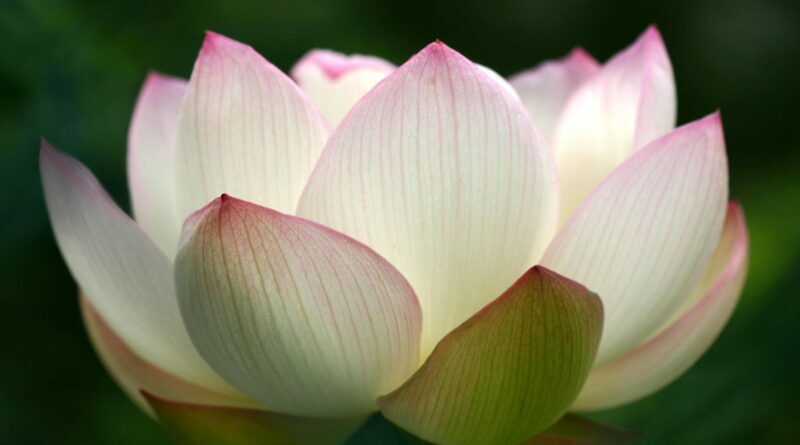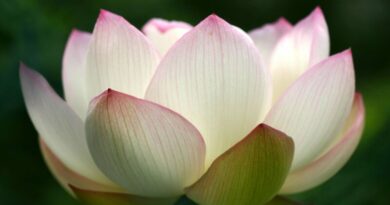DISENCHANTMENT
Disenchantment
We all practice for the sake of happiness, for a happiness that goes deeper than ordinary pleasures. But in coming to the practice we often bring assumptions about happiness — how it works, why we’re unhappy, what we can do to be happier — assumptions that we’re hardly even aware are assumptions because we assume them so strongly. We just take it for granted that they’re true. And sometimes they get in the way.
Two of the most common assumptions are ones that get most in the way. The first is that we’re unhappy because we can’t accept the way things are; that the purpose of the practice is to learn more acceptance. In other words, we’re essentially neurotic, as in that old distinction between neurosis and psychosis: The psychotic person thinks that two plus two equals five. The neurotic person knows that two plus two equals four, but hates them for it. Our problem is that we simply can’t accept the way things are. If we could only learn how to accept that two plus two does equal four and it’s perfectly fine, then we’d be happy. And so in that model, the purpose of the practice is to learn acceptance. But even Freud recognized that getting people past their neuroses would not solve the problem of happiness. As he said, it would simply lead them to the level of ordinary, everyday misery. And yet part of the common theory says, well, you have to learn how to accept that because that’s just the way things are.
Another model is that we’re unhappy because we have a sense of separateness. Inside we’re divided. Outside we’re separate from other people; we’re separate from nature. All we need to learn is how to develop a sense of oneness, a sense of interconnectedness, and then we’ll be happy. But that’s not how the Buddha saw interconnectedness. He saw that the way things are interconnected in terms of cause and effect is actually a cause for suffering. And even a sense of oneness, he says, is inconstant. It contains a subtle sense of stress. If you cling to it, you’re going to suffer. There’s a passage in the Canon where he describes the highest form of oneness, which is the oneness or non-duality of consciousness, in which you have a sense of consciousness as a totality, containing everything. Yet even that, he says, is inconstant, stressful, and not-self.
What these two ideas about happiness have in common is that the way things are out there is already a given, and we’re simply on the receiving end of what’s given, so we have to learn how to develop the proper attitude to what’s already there: Accept and try to find oneness within the way things are. But the Buddha’s take on things is different. Reality is only partly a given. We are also shapers of our reality. We have an active role in shaping every present moment that we experience.
Now, the present moment is not entirely plastic, entirely responsive to everything we want out of it. Some of it is formed by influences coming in from the past, but part of it comes from our intentions in the present moment. In this way we are both producers and consumers. We produce our suffering and then we consume our suffering. We produce our pleasures and we consume our pleasures. Understanding this point helps to open the road to a deeper happiness, because there is a happiness, the Buddha said, that is not produced and not consumed. It just simply is. But the way we keep feeding on the happiness we produce gets in the way.
So for him, the purpose of the meditation is not to celebrate oneness or to celebrate acceptance. It’s to develop two very different kinds of emotions: disenchantment and dispassion. The Pali word for disenchantment, nibbida, also means distaste, disgust, or revulsion, which may sound strong, but it needs to be strong. It’s an antidote to our strong attachment to feeding on things. That attachment, the Buddha said, is the essence of suffering. The word upadana, which means clinging, also means the act of eating, of taking sustenance. He says that upadana lies at the essence of suffering and stress. So what we need to learn is how to look at the things we feed on until we develop a strong sense that we don’t want to feed on them any more.
Now to get to that point, the Buddha does have us develop a certain amount of acceptance and a certain sense of oneness. This is what the practice of concentration is all about. You start by focusing on one object, like the breath, and then you stay with it long enough that you start developing a sense of oneness with it. Your awareness of the breath and the breath itself seem to become one and the same thing. There’s a sense of unification — ekodi-bhava — which the Buddha has us develop as much as possible. And he has us take that sense of oneness as far as it can go through the levels of concentration.
Why? Because he wants us to feed on that and then to start comparing this food with the other things we’ve been feeding on, to see that this is a much more refined pleasure, a more satisfying form of nourishment. The pleasure it gives is blameless: the pleasure that comes from just focusing your mind. The pleasures we get from things outside contain a certain amount of blame in that our taking pleasure means that other people, other animals, have to work, have to suffer in one way or another. An example is physical food. As we eat physical food, we gain pleasure, but to get that food to our plate or into our bowls requires a lot of work and sacrifice. So as the Buddha said, that’s a pleasure that contains some blame. Or in Ajaan Lee’s terms, it contains some kammic debts. Whereas the pleasure that comes simply from learning how to focus on your breath is not placing a burden on anyone, so it’s a type of food for the mind that’s really worth developing.
As you develop a sense of oneness with the food of concentration, you look at the other ways the mind has been feeding on things for its emotional pleasures and you realize that they’re pretty miserable. The image the Buddha gives in the Canon is of a blind person who has been given a soiled, oily rag by someone who says, “Look. This is a nice, clean, white piece of cloth.” The blind person takes the oily rag and gets very possessive of it, thinking that it’s a nice, clean white piece of cloth. But when a doctor eventually cures the blind person of his blindness and he can start seeing, the first thing he looks at is his cloth. He realizes that it’s not nice, clean, and white. It’s a dirty and oily rag. He says, “Wow, I was really fooled by that guy.”
In the same way, the Buddha says that once you attain the first taste of Awakening, you look back on your old pleasures and realize how you’ve been fooled by the mind — that in finding your pleasure, what you’ve been feeding on is just forms and feelings and perceptions and thought constructs and consciousness — which, when you really look at them very carefully, are not worth feeding on at all.
There’s a story they tell about the American occupation of Japan after World War II. There were some cooks in Japanese restaurants who were really upset by the fact that they had lost the war, and now they had to prepare food for the occupiers. So, to get some revenge, they would take human excrement and prepare it with all kinds of wasabi or whatever to mask the taste, and then serve it to their American customers. They would feed the occupiers shit, basically, and the occupiers didn’t know. So the cooks got their perverse pleasure that way. If you look at what you’ve been taking as food for the mind, you realize that it’s just the same sort of thing, that all the pleasure was in the preparation.
This is why we have the contemplation of the 32 parts of the body, the analysis of things in terms of the aggregates, in terms of the sense media, in terms of the properties: so we can realize that the food of lust or possessiveness we’ve been feeding on with regard to the body is really not based on much. It doesn’t give us any real sustenance, and the pleasure we get out of it is certainly not worth all the effort that goes into dressing it up. The purpose of this contemplation is to gain that sense of nibbida — disenchantment or revulsion — with the food we’ve been consuming so that we won’t want to eat it anymore.
When you decide you don’t want to eat it, you turn around and look at the fact that you’ve been preparing this food all along, and you realize you don’t want to prepare it any longer: That’s dispassion. You’ve had a passion for creating this food out of form, feeling, whatever. That’s why it was there as food. But once you gain a sense of dispassion for it, you stop creating it. And when you stop creating it, it’s no longer there. That’s when you experience cessation. The mind is no longer entangled either in the process of production or in the process of consumption. That’s when it’s freed. It opens to the happiness that’s there when you’re not so wound up or enthralled in production and consumption of all these miserable forms of food.
So the Buddha’s take on true happiness is very different from a lot of the assumptions we tend to bring to the practice. It’s important to keep this fact in mind. We’re not totally on the receiving end of things. We’re producers and consumers at the same time. And the producing and consuming of our ordinary pleasures — or even some of our more refined pleasures — is what’s getting in the way of realizing a happiness that goes beyond all this, that’s not dependent on being connected or unconnected. It’s not dependent on accepting or not accepting. It’s just there. But to find it we have to develop a sense of disconnect with our old enthrallments. And we have to decide not to accept the way things have been. In this way, the Buddha has a very different approach to how and where to find true happiness. But the happiness that comes is a lot truer than anything that can come from simply learning how to accept things or learning how to become one with them.
So try to keep this point in mind — that you’re both a producer and a consumer — and take a good, hard look at what you’ve been producing and how you’ve been consuming it. Look at all the effort that goes into producing happiness out of this body we have, out of feelings and perceptions and thought constructs and consciousness. Start asking yourself: Is it really worth all the effort? Maybe there’s something better. Maybe it’s time to grow up. When you can develop that sense of disenchantment and dispassion, it leads to cessation. Then you realize that cessation is not a scary thing. It’s not like extinction. It’s more like learning how to outgrow some old bad habits, your old addictions, your old intoxications, and finding that there’s something a lot better there when you put your old feeding habits aside.



